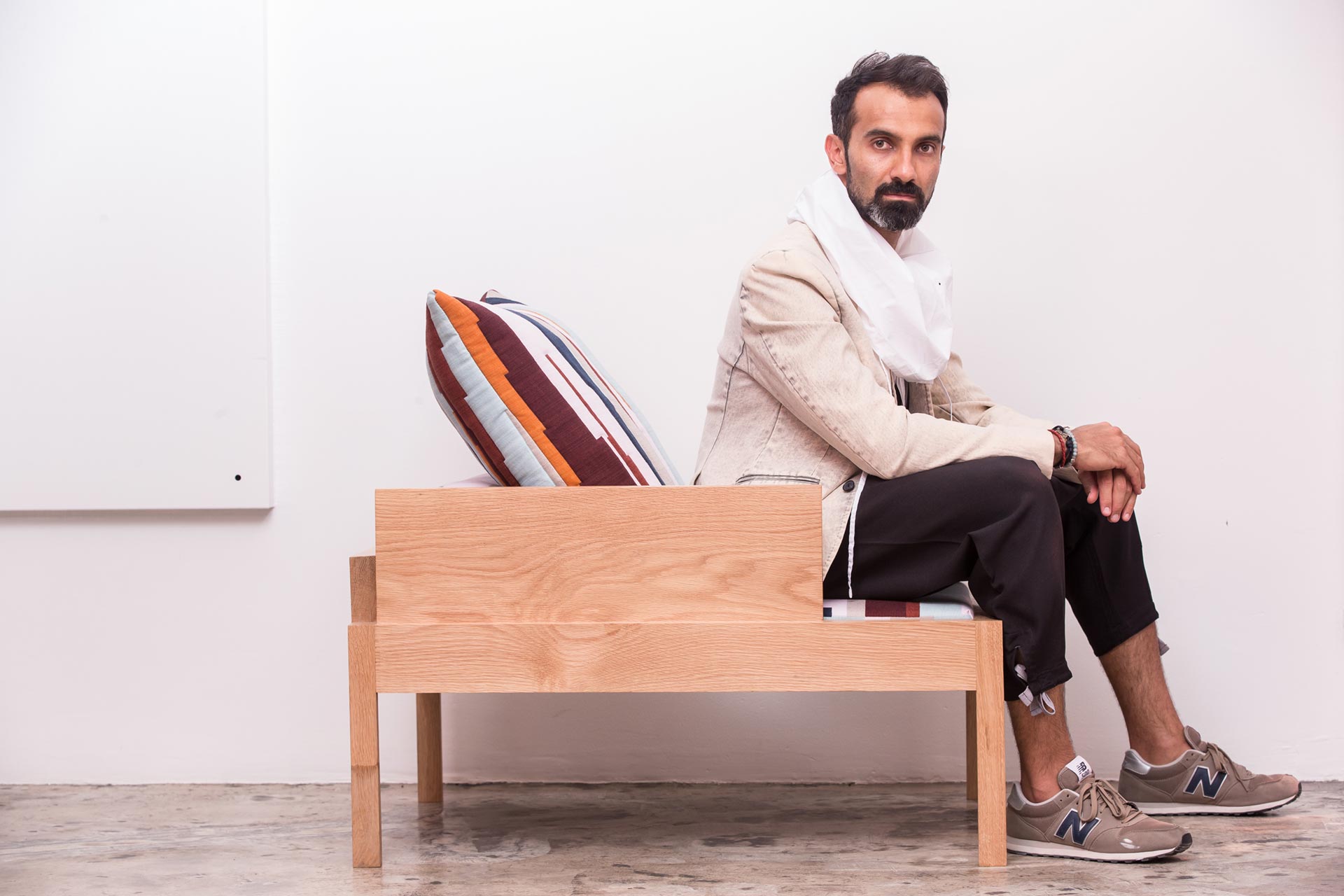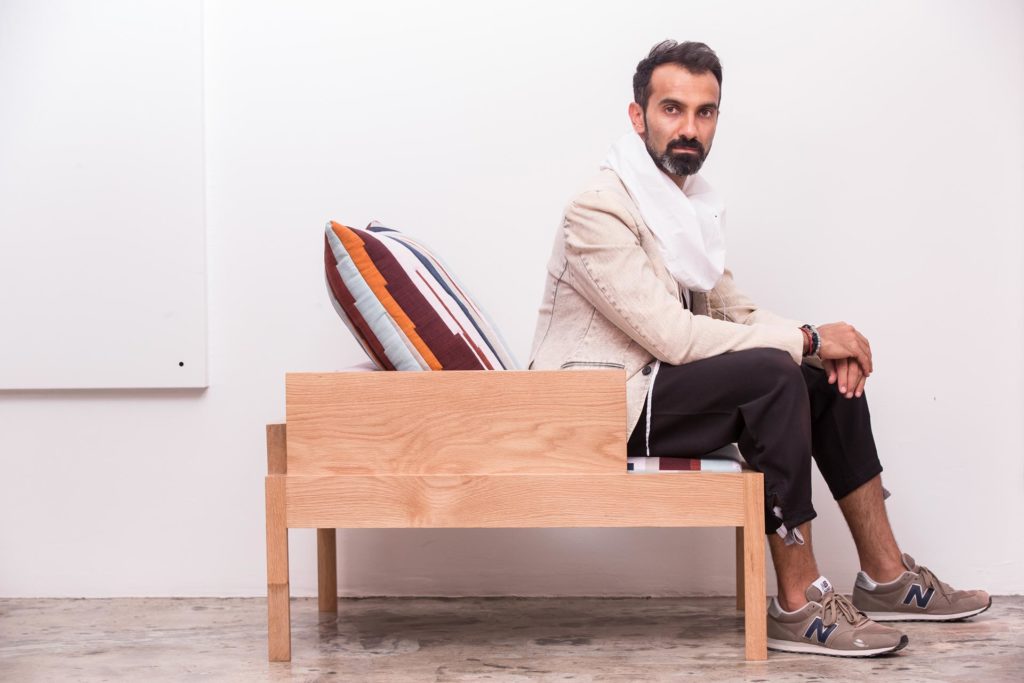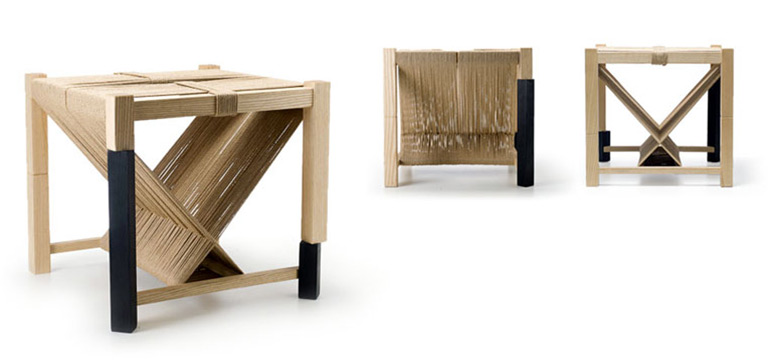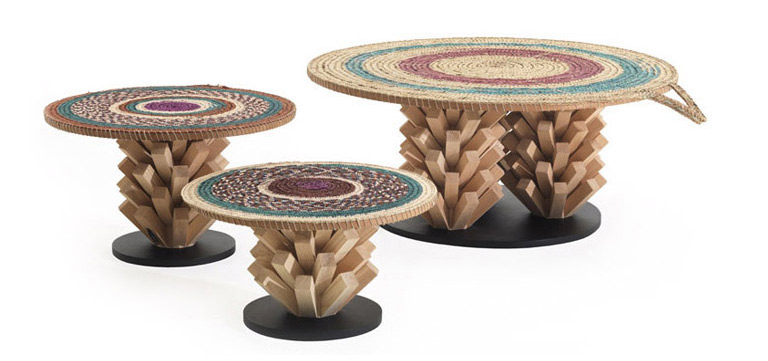Copyright © 2025 Motivate Media Group. All rights reserved.
Khalid Shafar’s fabulous journey
The Emirati design pioneer and advocate reveals is bringing regional talent to the world

With his signature ability to blend UAE culture and craftsmanship with contemporary design, Dubai-born Khalid Shafar has forged a global reputation with top design brands and industry professionals.
Shafar trained at the American University in Dubai in business; and then furniture and object design, first at Central Saint Martin’s College of Art and Design in London and the Centre for Fine Woodworking in New Zealand – providing a diverse background that is an invaluable asset. Since his first solo collection launched in 2011, his design savvy has led to collaborations with the Campana Brothers, French cabinetmaker Moissonnier, and Kartell.
Rooted in material culture, his design philosophy is always evolving. “Simple lines mixed with rich details and fine materials are the hallmarks of my objects,” he explains. “It’s a revival of the ‘50s, ‘60s, and ‘70s avant-garde sleek styling re-interpreted with today’s furnishing trends. I believe it’s the ‘tale’ that is the aesthetic side of each object. Whether you belong to the tale or not, you still react to it.”
And it also includes a deep commitment to international design. “Design should be universal and versatile [rather] than tied to a particular culture or ethnic background. It should appeal to a wider audience and adapt to different spaces and tastes. But, designs that evoke certain cultures gain the interest and attention of certain clients and the recognition and exposure of global design. There are more sensitivities and constraints [that] a designer should consider when designing for the Middle East [when compared to] other regions – notably cultural, political or religious aspects,” he reflects.
‘The Nomad’, Shafar’s overwhelmingly popular – and extended – interactive public exhibition at London’s Chelsea College of Arts as part of the Shubbak festival was revealed in Dubai at d3 during Design Week 2015. Inspired by a collaboration with the American Hardwood Export Council (AHEC), “the concept brings historical architecture and the traditional material of arish (palm fronds), rethinking it into a format for the 21st Century – a ‘reappropriation’ as it were. It’ s made from my preferred material, wood (African Teak),” Shafar explains.
The result was phenomenal. “It made strangers get closer in enclosures, removed all communication barriers and opened a space for interaction and connection. It carries a social message for architecture in the UAE, exploring how old methodologies and architectural components can be re-purposed to fit our current lifestyle.”
But his heart is always in the UAE. “Culturally inspired yet contemporarily presented, my design approach revolves around defining some UAE design aesthetics and attributes. I think the Illusion line illustrates how Dubai can be seen in my objects. It was inspired by my love of city life: the buzz, the vibrancy, the many cultures; a tribute to my yearning for city life. The Illusion stool for me is my Dubai,” he explains.
His favourite line is The Palm, first introduced in his 2012 collection and still evolving. “It gained international recognition and has become a signature for my brand. Another line is Arabi, made using unconventional material, the egal that men in the Arab region traditionally wear on top of their head covers.”
Refreshingly, Shafar is a committed ambassador for the region’s design scene, mentoring young UAE creative entrepreneurs as part of the ADMAF/British Council initiative, The Cultural Excellence Fellowship. “My advice to aspiring designers is to think global and act global. Two things will make you stand out in the crowd: the quality of your work, and the benchmark and position you set for yourself and your brand.”
His thoughts on the future of design Dubai are bright: “Dubai is leading the fast movement in this part of the world. Internationally, the debate between technology integration in design and design materiality and the ‘making culture’ will continue and evolve, creating a new breed of hybrid design.” We can’t wait for him to lead the way.
The Latest
Textures That Transform
Aura Living’s AW24 collection showcases the elegance of contrast and harmony
Form Meets Function
Laufen prioritises design, functionality and sustainability in its latest collections
Preserving Culture, Inspiring Creativity
Discover the Legacy of a Saudi Art Space: Prince Faisal bin Fahd Arts Hall explores the Hall’s enduring influence on the cultural fabric of Saudi Arabia
Channelling the Dada Spirit
Free-spirited and creative, The Home Hotel in Zurich injects a sense of whimsy into a former paper factory
id Most Wanted- January 2025
Falaj Collection by Aljoud Lootah Design
Things to Covet in January
identity selects warm-toned furniture pieces and objets that align with Pantone’s colour of the year
Shaping the Future of Workspaces by MillerKnoll
Stacy Stewart, Regional Director Middle East & Africa of MillerKnoll discusses the future and evolution of design in workspaces with identity.
Shaping Urban Transformation
Gensler’s Design Forecast Report 2025 identifies the top global design trends that will impact the real estate and built environment this year
Unveiling Attainable Luxury
Kamdar Developments has launched 105 Residences, a new high-end development in Jumeirah Village Circle.
The Muse
Located in the heart of Jumeirah Garden City, formerly known as ‘New Satwa’, The Muse adds to the urban fabric of the area
Cultural Immersion Meets Refined Luxury
The Chedi Hegra opens its doors in AlUla’s UNESCO World Heritage Site
Redefining Coastal Luxury
Sunshine Bay on Al Marjan island combines seaside views, exceptional design, and world-class amenities to create a unique waterfront haven



















